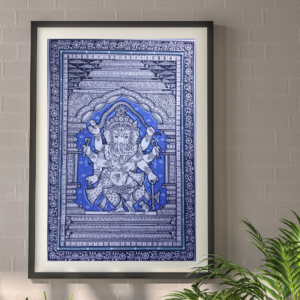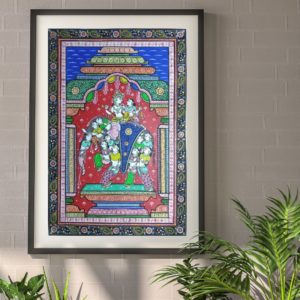Ancient Hindu mythology is rich with fascinating tales that convey profound philosophical and moral lessons. Among these legends, one stands out prominently – the story of why Shiva cut Brahma’s head. This intriguing episode from Hindu scriptures illustrates the essence of divine wisdom, humility, and the importance of adhering to one’s duties. Let us delve into this captivating narrative and explore the underlying symbolism and teachings it imparts.
Setting the Stage: In the cosmic panorama of Hindu beliefs, the Trimurti – the trinity of Brahma (the creator), Vishnu (the preserver), and Shiva (the destroyer) – governs the universe. Each deity embodies unique attributes, responsibilities, and cosmic powers. As his primary duty, Brahma creates and shapes the universe, while its preservation is entrusted to Vishnu, and its destruction and regeneration to Shiva.
The Arrogance of Brahma:
According to ancient texts, during the early phases of creation, Brahma became excessively proud of his role as the creator. He believed that his power over creation made him the most superior among the divine triumvirate. This arrogance led him to neglect his duty and disregard the principles of humility and respect for fellow deities.
The Quest for Truth:
In response to Brahma’s inflated ego, Shiva, the embodiment of wisdom and righteousness, decided to humble Brahma and teach him a lesson in humility. Shiva manifested himself as an infinite pillar of light, extending endlessly in both directions, leaving Brahma perplexed and curious. To ascertain the beginning and end of the divine light, Brahma decided to embark on a journey.
Why Shravan Month is Celebrated for Lord Shiva
The Deceitful Act:
In his quest to find the origin and endpoint of the luminous column, Brahma enlisted the help of his vehicle, the swan, and his companion, Saraswati – the goddess of wisdom and knowledge. When Brahma failed to discern the pillar’s limits, he devised a deceitful plan. He asked the swan to carry him to the top, while simultaneously, falsely claiming that he had discovered the source of the brilliant light.
Shiva’s Revelation:
Unbeknownst to Brahma, Shiva had witnessed the entire deception. Shiva, as the personification of divine integrity, was displeased with Brahma’s dishonesty and manipulative behavior. In response, Shiva decided to take drastic action to restore the balance and uphold the cosmic order.
Why Nandi is Outside Shiva Temple
Shiva Cuts Brahma’s Head:
Confronting Brahma, Shiva revealed that he was aware of the deception and stated that due to his lack of humility and integrity. Brahma would lose the position of reverence and authority he once held. In a symbolic act, Shiva decided to sever Brahma’s fifth head, the source of his arrogance and deceit. This act signified the importance of truth, humility, and the consequences of violating one’s duty.
The Lesson Learned:
Brahma’s humiliation served as a powerful lesson for both the gods and mortals alike. It emphasized the significance of self-realization, humility, and adherence to one’s divine duties. Brahma’s punishment was not only a consequence of his actions but also a testament to the need for ethical behavior, even among the deities.
The Regeneration of Brahma:
After Lord Shiva punished Brahma’s deceit by severing his fifth head, the other gods and sages present at the scene were stunned. However, they soon realized the divine wisdom behind Shiva’s actions. Recognizing the necessity of maintaining the cosmic balance and allowing for regeneration, Lord Shiva blessed Brahma with a new head. The regenerated head symbolized a fresh start for Brahma, emphasizing the importance of learning from one’s mistakes and growing in humility.
Why Shiva Has Moon on His Head
Brahma’s Repentance:
The incident of losing his head and then receiving a new one left a profound impact on Brahma. He realized the gravity of his arrogance and vowed to amend his ways. Brahma’s repentance exemplifies the concept of divine forgiveness and the possibility of redemption for those who genuinely seek to correct their faults.
The Resilience of the Cosmic Order:
The episode of Shiva cutting Brahma’s head serves as a reminder of the resilience and balance inherent in the cosmic order. While the Trimurti governs the universe, it also highlights the interconnectedness of creation, preservation, and destruction. The incident reinforced the understanding that even the gods are bound by universal laws and must adhere to their designated roles.
Why Did Lord Shiva Drink Poison?
The Role of Saraswati:
In the story, Saraswati, the goddess of wisdom and knowledge, played a crucial role. Despite being aware of Brahma’s dishonesty, she remained true to her principles and did not partake in his deception. Staying steadfast in one’s moral values and not being swayed by others’ misconduct is emphasized by this.
The symbolism of the Pillar of Light:
The pillar of light that Lord Shiva manifested represents the cosmic energy and the omnipresence of the divine. Its endless and formless nature signifies the incomprehensible vastness of the universe and the eternal cycle of creation and destruction.
A Lesson in Cosmic Humility:
The story of Shiva cutting Brahma’s head is more than just a tale of divine punishment. It exemplifies the profound virtue of cosmic humility. Even the mightiest of gods are not exempt from the consequences of arrogance and dishonesty, emphasizing the importance of embracing humility and respecting the inherent divinity in all beings.
Why Lord Shiva is Called Mahadev
Conclusion:
The story of why Lord Shiva cut Lord Brahma’s head is a timeless and insightful myth from Hindu mythology that imparts valuable lessons on integrity, humility, and the cyclical nature of existence. It powerfully reminds us that divine beings, like mortals, are bound by universal laws and must act with wisdom and righteousness. The episode of Brahma’s deceit and subsequent redemption reinforces the essence of cosmic order and the perpetual cycle of creation and regeneration that governs the universe.

If you liked this post, check out some of our related posts too!
Enigmatic Hue: Why is Krishna Blue?















